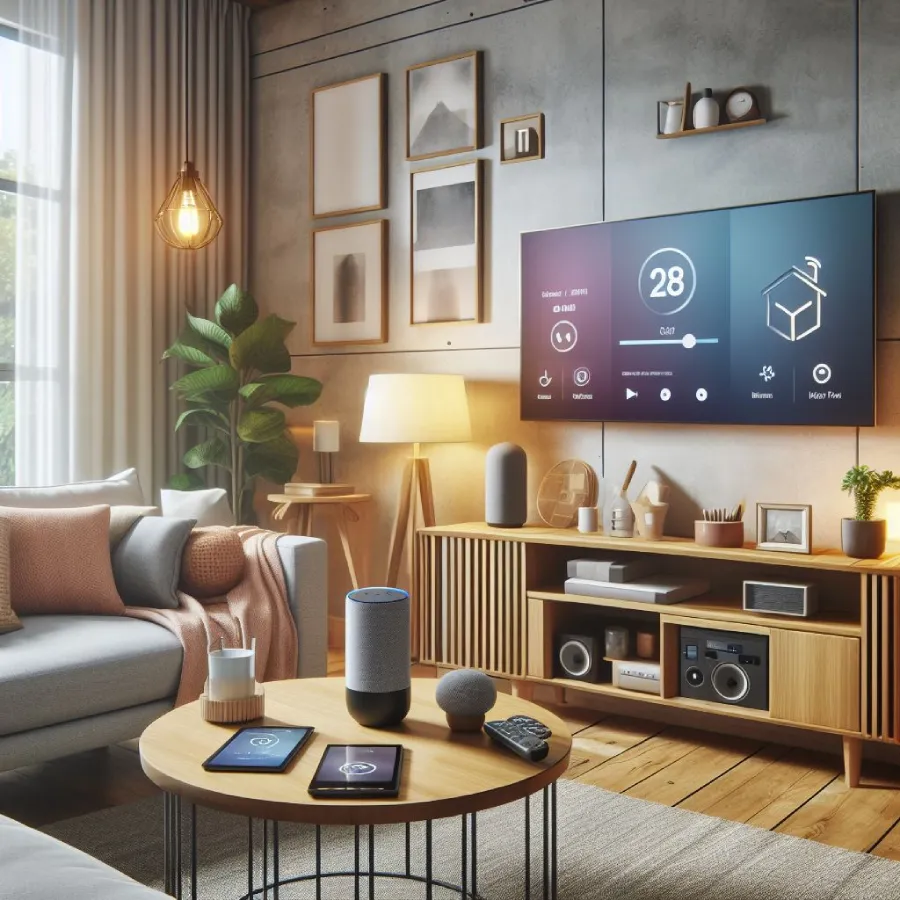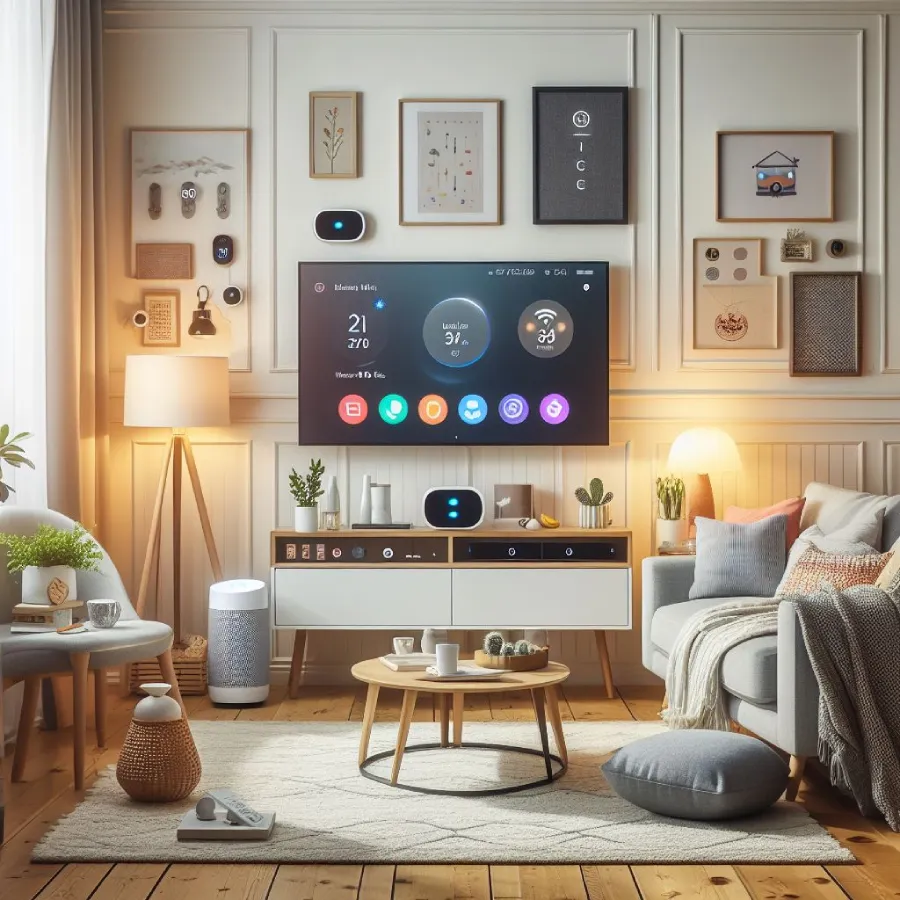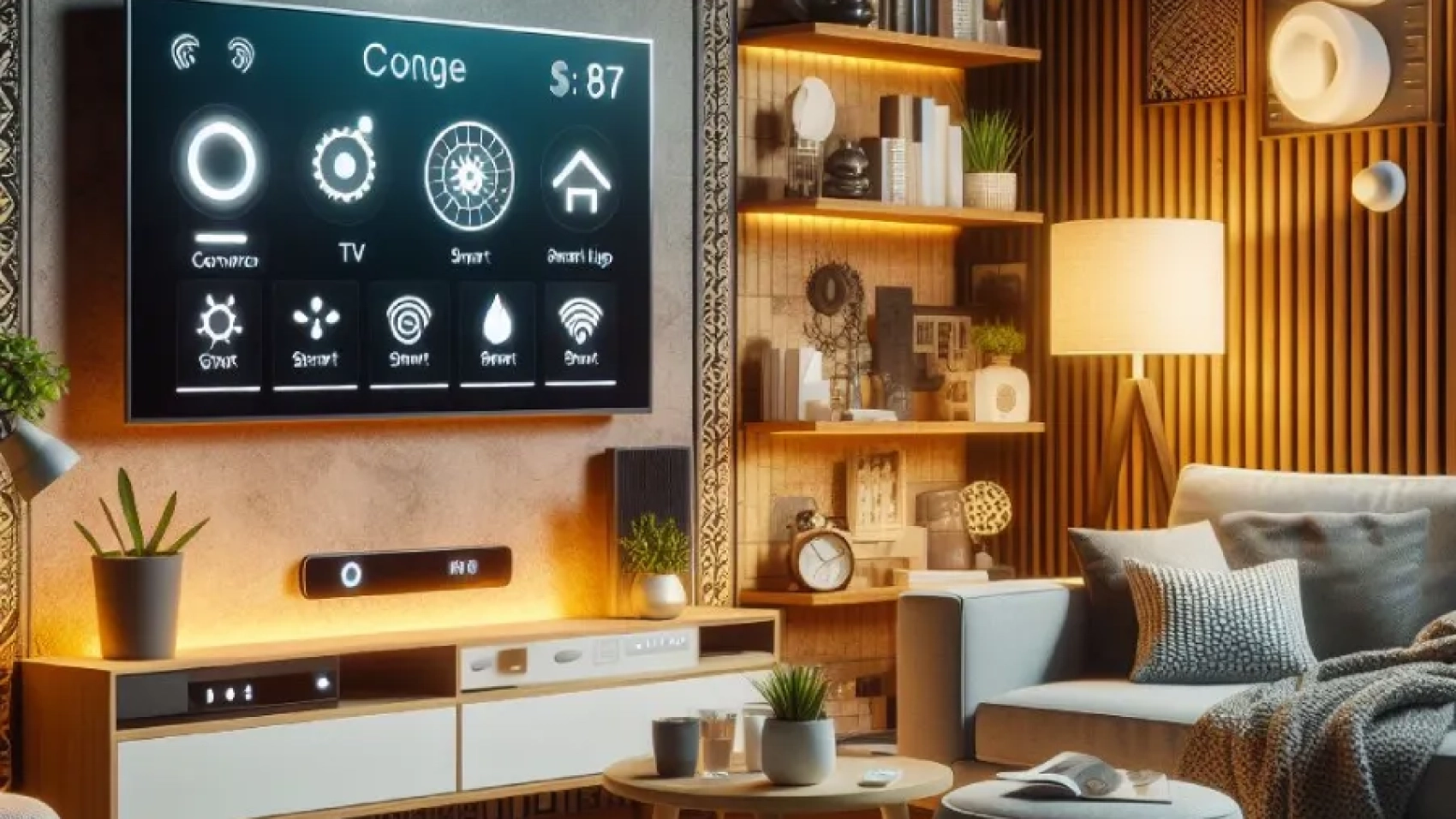What is Smart Home Automation and How Does it Work?
The realm of technology is constantly evolving, and one term that is gaining momentum and reshaping our lives is “Home Automation.” This groundbreaking concept is challenging the conventional ideas of home living by providing unparalleled convenience, efficiency, and security. In this extensive guide, we will explore the world of Home Automation, examining its components, operations, and the multitude of advantages it offers to contemporary households.
Table of Contents
Toggle
- Understanding Home Automation
- The Components of Home Automation
- How Home Automation Works
- Applications and Benefits of Home Automation
- The Future of Home Automation
- Overcoming Challenges and Considerations
- Embracing Home Automation: Tips for Getting Started
- Conclusion
Understanding Home Automation
At its core, Home Automation refers to the integration of technology within residential spaces to automate and streamline various functions and tasks. It involves the interconnection of electronic devices and systems, allowing them to communicate, interact, and perform designated functions autonomously or based on predefined conditions.
In essence, Home Automation empowers homeowners to control and manage a wide array of features and appliances within their homes remotely or through centralized systems. From lighting and climate control to security cameras and entertainment systems, the possibilities for automation are virtually limitless.

The Components of Home Automation
To grasp how Home Automation works, it’s essential to understand its key components:
- Sensors and Detectors: These serve as the sensory organs of the automated system, detecting changes in the environment or specific conditions. Motion sensors, temperature sensors, and smoke detectors are examples of such components.
- Controllers: Acting as the brain of the automation setup, controllers interpret data from sensors and trigger appropriate actions. These can range from simple programmable timers to sophisticated smart hubs equipped with artificial intelligence capabilities.
- Actuators: Responsible for executing the desired actions based on commands from the controllers, actuators include devices like smart thermostats, motorized blinds, and smart locks.
- Network Connectivity: Seamless connectivity via Wi-Fi, Bluetooth, or Zigbee enables communication between different components of the Home Automation system, allowing users to monitor and control their homes remotely.
How Home Automation Works
Home Automation operates on the principles of connectivity, communication, and control.Here’s a simplified breakdown of the process:
- Data Acquisition: Sensors and detectors collect information about the home environment, such as temperature, humidity, occupancy, and security status.
- Data Processing: The collected data is transmitted to the central controller, where it is analyzed and interpreted to determine appropriate actions or responses.
- Decision Making: Based on predefined rules, user inputs, or machine learning algorithms, the controller makes decisions regarding device operation, energy optimization, security protocols, and more.
- Execution of Commands: Once decisions are made, the controller sends commands to the relevant actuators, instructing them to adjust settings, activate devices, or initiate specific tasks.
- Feedback Loop: Feedback mechanisms ensure that the system responds dynamically to changes in the environment or user preferences, constantly optimizing performance and user experience.

Applications and Benefits of Home Automation
Home Automation offers a myriad of practical applications and tangible benefits for homeowners:
- Convenience and Comfort: With automated lighting, thermostats, and entertainment systems, homeowners can customize their living spaces to suit their preferences effortlessly. From scheduling lighting scenes to adjusting room temperatures remotely, convenience is at the forefront of Home Automation.
- Energy Efficiency: Smart thermostats, occupancy sensors, and energy monitoring devices enable users to optimize energy usage, reduce waste, and lower utility bills. By intelligently managing heating, cooling, and lighting systems, Home Automation contributes to a more sustainable lifestyle.
- Enhanced Security: Integrated security cameras, smart door locks, and motion sensors provide homeowners with real-time monitoring and proactive security measures. With instant alerts and remote access capabilities, individuals can safeguard their homes and loved ones from potential threats or intrusions.
- Peace of Mind: Whether traveling for business or leisure, Home Automation offers peace of mind by allowing homeowners to monitor and control their properties remotely. From checking surveillance footage to remotely locking doors, users can stay connected and informed, no matter where they are.
The Future of Home Automation
As technology continues to advance and consumer demand grows, the future of Home Automation appears promising. Innovations such as voice recognition, predictive analytics, and integration with Internet of Things (IoT) devices are poised to further enhance the capabilities and versatility of automated systems.
In conclusion, Home Automation represents a transformative paradigm shift in the way we interact with our living spaces. By harnessing the power of technology, homeowners can enjoy unprecedented levels of comfort, efficiency, and security. Whether you’re a tech enthusiast or simply seeking to simplify your daily routines, embracing Home Automation can unlock a world of possibilities and elevate your quality of life.
Embrace the future of living with Home Automation, where convenience meets innovation, and your home becomes truly smart.Start your journey today and experience the endless possibilities that await within the realm of automated living.
Overcoming Challenges and Considerations
While the potential benefits of Home Automation are compelling, it’s important to acknowledge and address certain challenges and considerations:
- Compatibility and Interoperability: As the market floods with a plethora of smart devices and platforms, ensuring compatibility and interoperability between different brands and ecosystems can be daunting. Investing in standardized protocols and open-source platforms can help mitigate compatibility issues and ensure seamless integration across devices.
- Data Privacy and Security: With the proliferation of connected devices and data exchange, safeguarding personal information and securing IoT networks against cyber threats is paramount. Implementing robust encryption protocols, regularly updating firmware, and practicing good cyber hygiene can help mitigate security risks and protect sensitive data from unauthorized access or breaches.
- Cost and Return on Investment: While Home Automation offers long-term benefits in terms of energy savings, convenience, and security, the initial investment can be substantial. Homeowners should carefully assess their needs, prioritize essential functionalities, and explore financing options or government incentives to maximize the return on investment.
- User Interface and Usability: The user experience plays a pivotal role in the adoption and acceptance of Home Automation technologies. Intuitive interfaces, streamlined setup processes, and responsive customer support are essential for ensuring user satisfaction and minimizing frustration.
Embracing Home Automation: Tips for Getting Started
For those embarking on their Home Automation journey, here are some practical tips to help you get started:
- Define Your Objectives: Identify your priorities and objectives for Home Automation, whether it’s enhancing comfort, improving energy efficiency, or bolstering security. Understanding your needs will guide you in selecting the right devices and solutions for your home.
- Research and Explore Options: Take the time to research different Home Automation platforms, devices, and ecosystems available in the market. Consider factors such as compatibility, features, user reviews, and manufacturer reputation before making purchasing decisions.
- Start Small and Scale Up: Begin with simple automation tasks, such as installing smart lighting or a programmable thermostat, before expanding to more complex systems. Starting small allows you to familiarize yourself with the technology and gradually integrate additional devices and functionalities over time.
- Seek Professional Guidance: If you’re unsure about the technical aspects of Home Automation or need assistance with installation and setup, don’t hesitate to seek professional guidance from certified installers or Home Automation specialists. They can offer valuable insights, recommendations, and support to ensure a smooth and successful implementation.
Conclusion
In summary, Home Automation represents a transformative frontier in modern living, offering unparalleled convenience, efficiency, and security to homeowners worldwide.By harnessing the power of interconnected devices, intelligent algorithms, and user-friendly interfaces, individuals can create personalized, adaptive living environments that cater to their unique needs and preferences.
From simplifying daily routines to enhancing energy efficiency and safeguarding property, the benefits of Home Automation are vast and multifaceted. By embracing innovation, overcoming challenges, and adopting best practices, homeowners can unlock the full potential of automated living and embark on a journey towards a smarter, more connected future.
As technology continues to evolve and Home Automation solutions become more accessible and sophisticated, the possibilities for enhancing our living spaces are limitless. Whether you’re a tech enthusiast, a sustainability advocate, or simply seeking to elevate your quality of life, Home Automation offers a pathway towards a more efficient, secure, and enjoyable home environment.

Leave A Comment